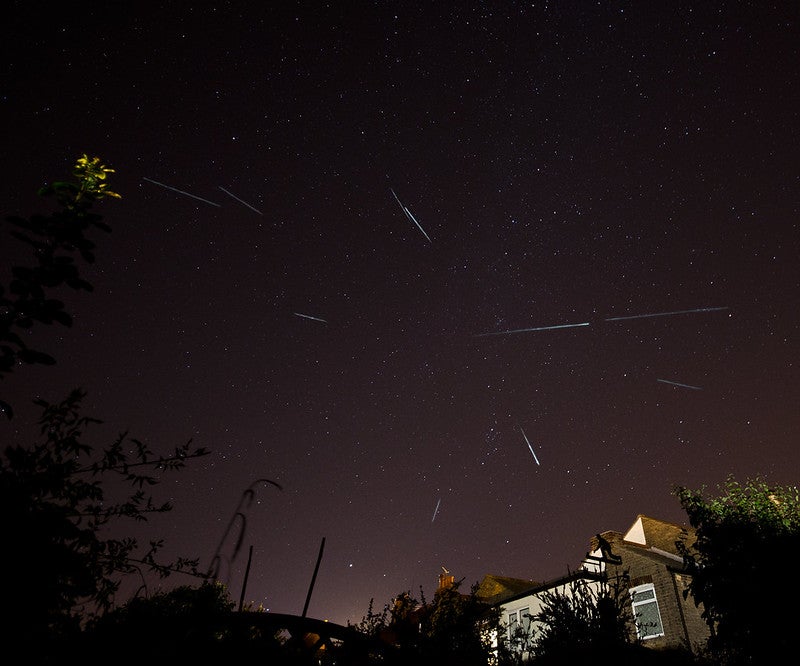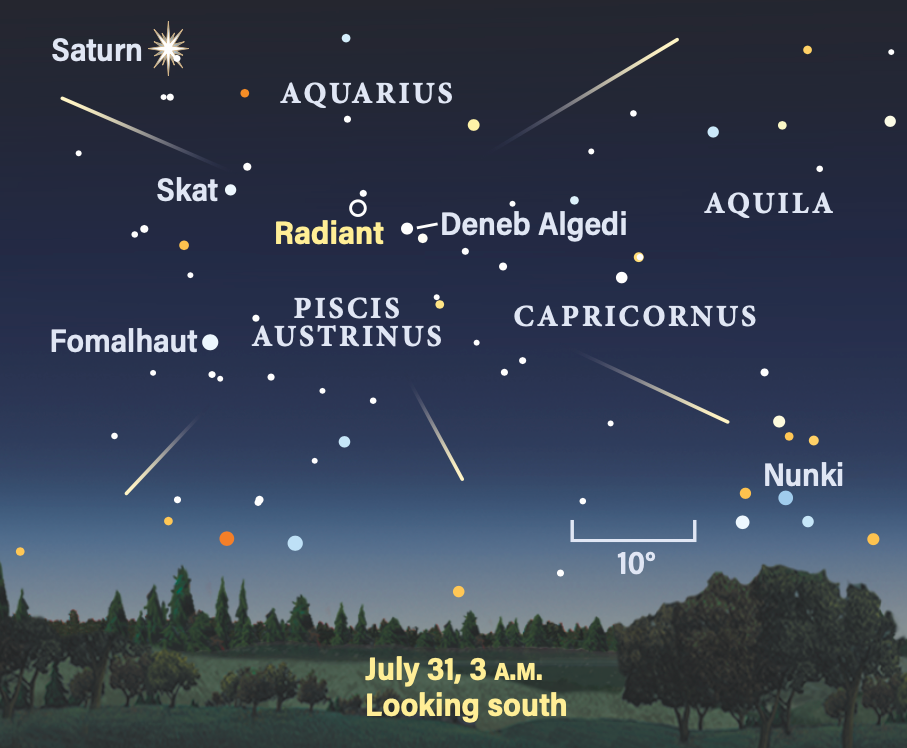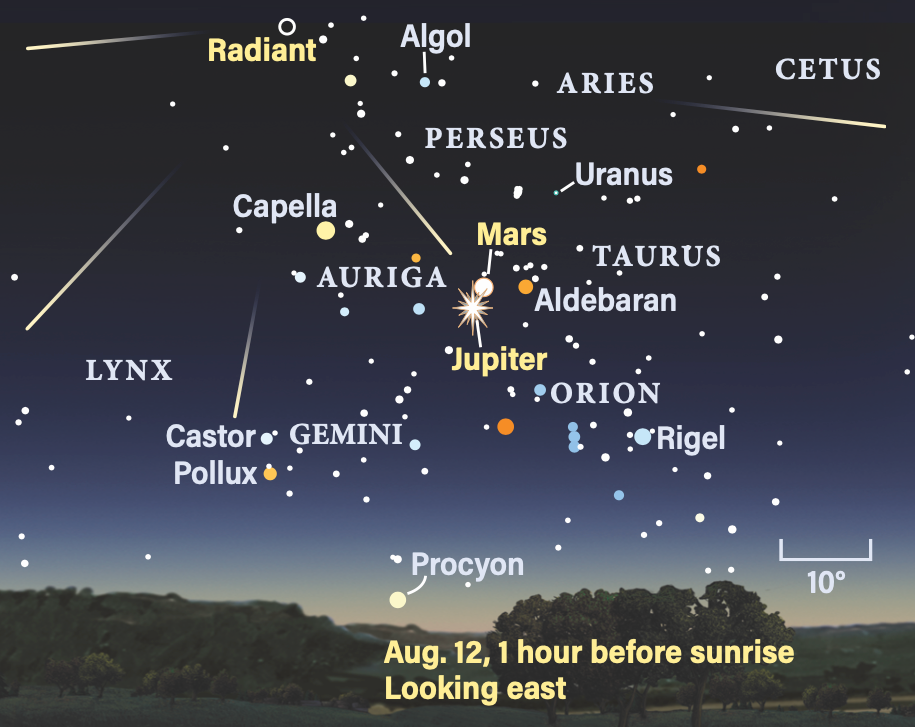
The Alpha Capricornid, Southern Delta Aquariid, and Perseid meteor showers have already begun, but like all meteor showers, they’ve been ramping up slowly. Now, their peaks are right around the corner.
The Alpha Capricornids and Southern Delta Aquariids will peak around the same time: July 31, while the Perseids reach their maximum in mid-August.
Here’s everything you need to know to catch July’s stunning double meteor shower plus what will be the best meteor shower of the year, the upcoming Perseids.
How to view meteors
Light pollution — including moonlight — can wash out the light from meteors, so meteor showers are best viewed in a dark sky with no Moon, in a location that’s far from streetlights or other sources of light.
You don’t need any special equipment to watch a meteor shower. In fact, viewing with the naked eye is by far the best method because meteors pass through the atmosphere too quickly to spot them with binoculars or other viewing equipment. Meteors can also appear anywhere across a broad swath of sky at random, so you need a large field of view to find them.
The Alpha Capricornids
When to watch
The Alpha Capricornids are active from July 3 to Aug. 15 and will peak on the night of July 30 into the morning of the 31st. On this night, the Moon will be a waning crescent about 18 percent lit when it rises around 2 A.M. local daylight time. Although this meteor shower will only yield a maximum zenithal rate of about 5 meteors per hour, the Alpha Capricornids are known to produce occasional bright, slow-moving fireballs.
Parent object
Meteor showers occur when the trail of debris that comets leave behind as they round the Sun intersects with Earth’s orbit and burns up in our atmosphere. The comet that produced the debris is known as the meteor shower’s parent object.
The Alpha Capricornids originate from debris left by the comet 169P/NEAT, which orbits the Sun every 4.2 years.
The radiant
A meteor shower’s radiant is the point from which meteors appear to radiate in the sky. Showers are named after the position of their radiant. The Alpha Capricornids radiate from a point in far northwestern Capricornus. The constellation will be visible roughly all night from mid-latitudes, though it only reaches about 30° in altitude at its highest. More northern latitudes will have less visibility than more southerly ones.
With small meteor showers like the Alpha Capricornids, it might be beneficial to focus your gaze closer to the radiant so you can see the most meteors, although strictly fixing your gaze there isn’t necessary, as meteors can appear anywhere in the sky. This is especially true for larger meteor showers like the Perseids. However, you will want to make sure that the radiant is above the horizon so that the most meteors will be visible.
Additionally, because meteors originate from the radiant, the longest trains, or streaks in the sky, are generally a few tens of degrees away from the radiant, on either side.
The Southern Delta Aquariids
When to watch
The Southern Delta Aquariids are active from July 12 to Aug. 23. Unlike some meteor showers, the Southern Delta Aquariids do not have a sharp peak; instead, the rate of meteors gradually builds as the meteor shower progresses. At their maximum on the 31st, the Southern Delta Aquariids produce about 25 meteors per hour when the radiant is overhead.
Because the moonlight will interfere with viewing conditions as the shower ramps down in mid- to late August, the best time to watch will be the last couple nights of July, when the shower officially peaks, and into the first week of August, when moonlight will be negligible and the Moon will set before midnight.
The nights of July 30 and 31 will be ideal to view this shower because the moonlight won’t be a problem early on. The evening of July 30 is moonless, as the Moon won’t rise until 2 A.M. local daylight time on the 31st, as is the night of July 31, when a thin crescent Moon (10 percent lit) won’t rise until roughly 2:45 A.M. local daylight time on Aug. 1.
However, note that the best time to view any meteor shower is in the early-morning hours, when Earth is rotating into the meteor stream. Fortunately, on July 31 and Aug. 1, the waning Moon shouldn’t interfere too much even after it rises.

Radiant
The Southern Delta Aquariids’ radiant is in southern Aquarius. It rises after Capricornus in the evening and reaches its highest point in the sky around 2:30 A.M. local daylight time.
Parent object
The Southern Delta Aquariids are debris left by Comet 96P/Machholz, which was discovered in 1986 by Donald Machholz. This comet orbits the Sun once every 5.3 years.
The Perseids
When to watch
The Perseids are active this year from July 17 to Aug. 24, peaking early on the morning of Aug. 12. The Perseids have a sharp peak, so be sure not to miss them overnight on Aug. 11/12 if you want to have the best viewing experience.
This is by far the largest meteor shower of the summer, with a zenithal hourly rate during the peak of some 100 meteors per hour. The only other meteor showers of comparable size — the Geminids and the Quadrantids — occur in December and January. Furthermore, this year’s Geminids will be overshadowed by a nearly Full Moon, making the Perseids the best and most enjoyable meteor shower of the year.
Even better: Although the Moon on Aug. 11 will be a waxing crescent some 45 percent illuminated, the Moon will set before midnight so you don’t have to worry about moonlight getting in the way of your skywatching experience during the ideal time for viewing in the early-morning hours.

Radiant
The Perseids’ radiant is in northwestern Perseus. If your latitude is around 40° north or greater in the Northern Hemisphere, the radiant doesn’t set, so it should remain visible all night. However, note that you’ll still want to wait for that radiant to reach its highest point in the sky to see the most meteors — this is around dawn, although it’s possible to see meteors as early as 10 P.M.
However, you won’t necessarily need to find the radiant to enjoy the Perseids, since they will be visible throughout the whole sky.
Parent object
The Perseids originate from Comet 109P/Swift-Tuttle, which was co-discovered 1862 by Lewis Swift and Horace Tuttle. The comet orbits the Sun once every 133 years.









